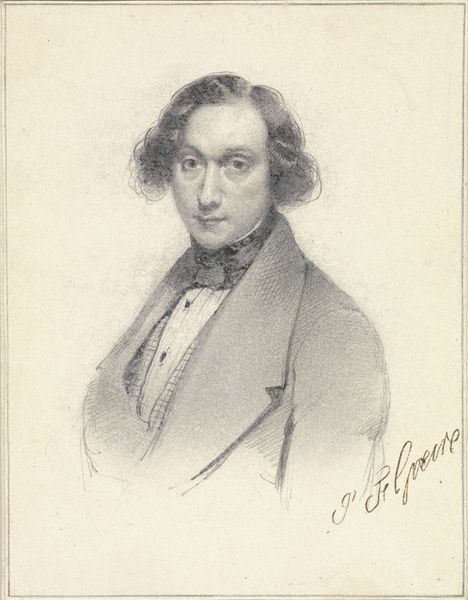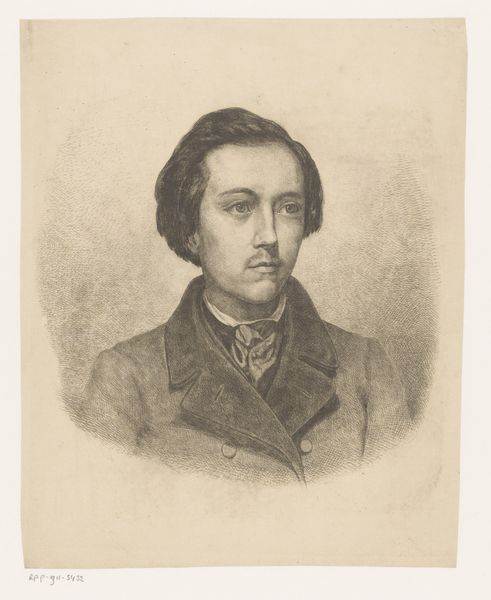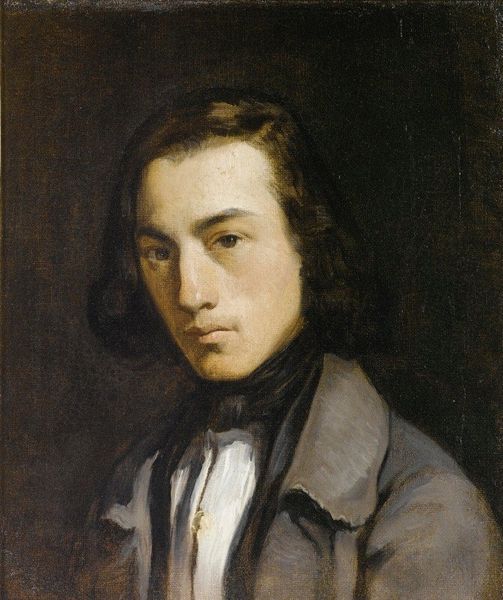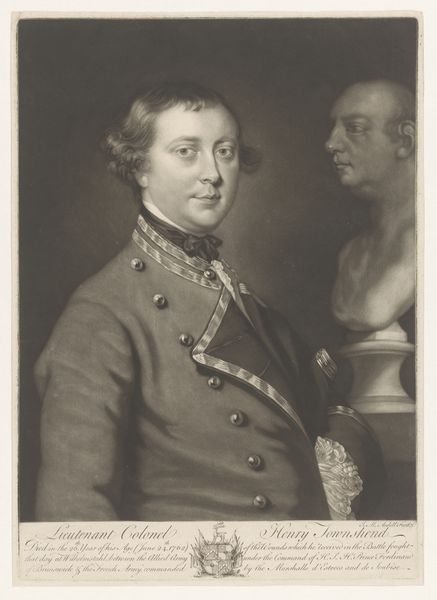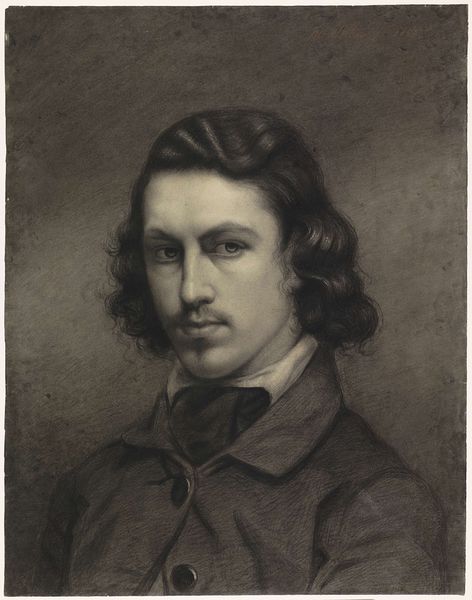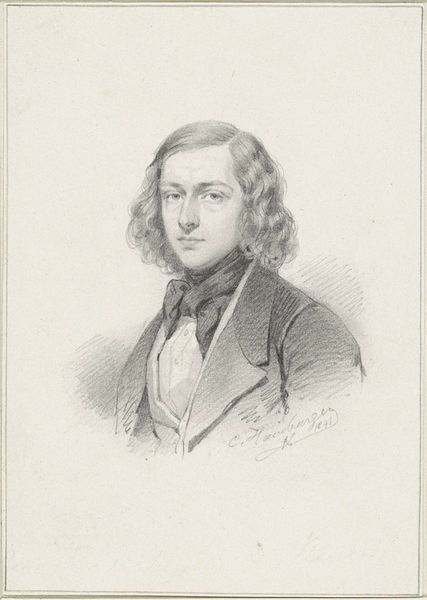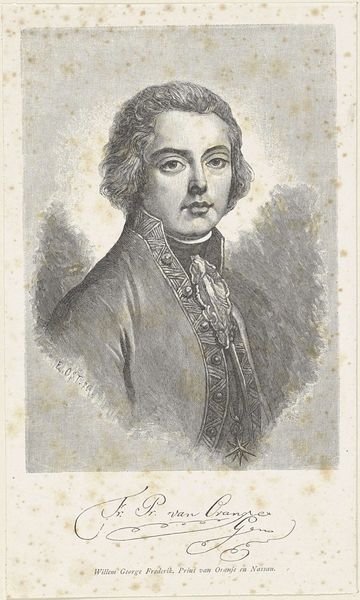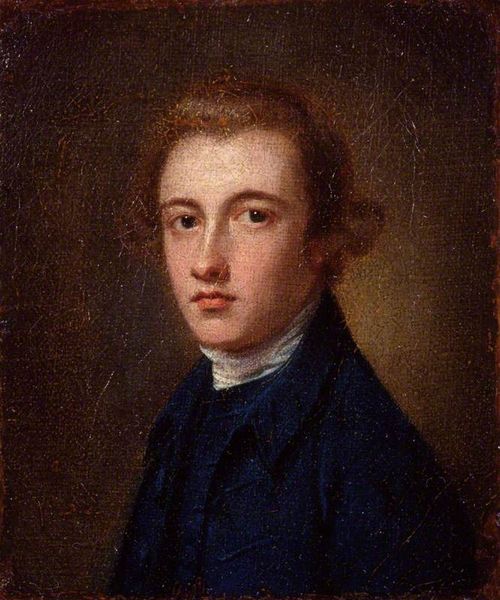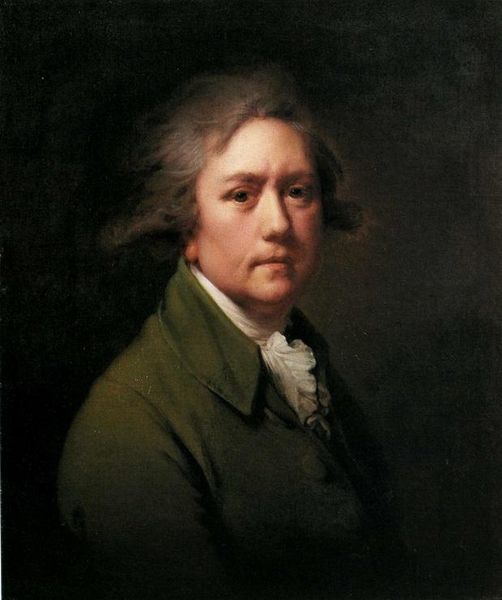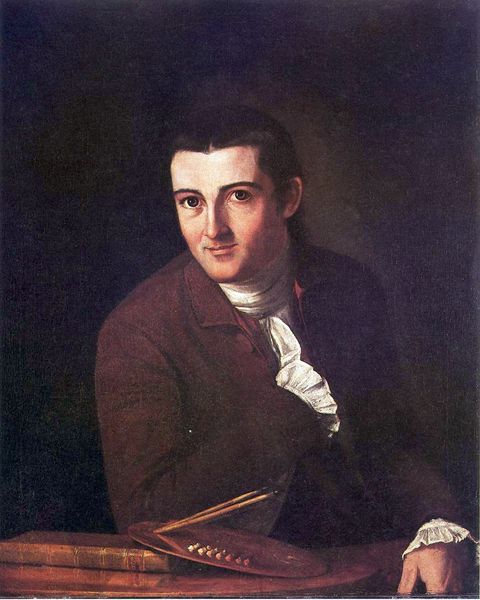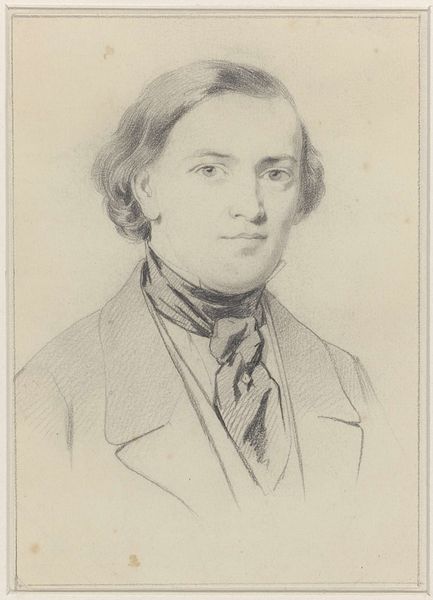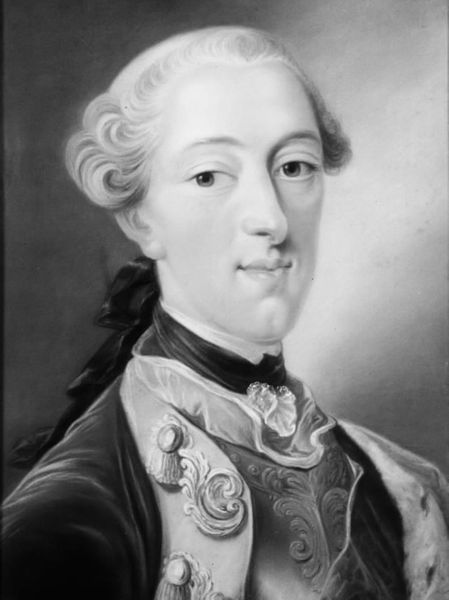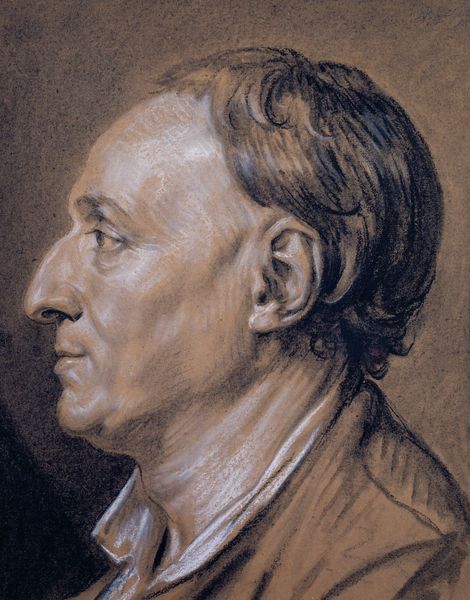
Dimensions: 47 x 39.4 cm
Copyright: Public domain
Editor: Here we have Joseph Wright of Derby's "Self-Portrait" from 1765, rendered in oil paint. I'm struck by the somber mood and the intense gaze. What do you see in this piece? Curator: Well, immediately I consider the rise of the artist in the mid-18th century. Wright wasn’t painting for the aristocracy, but for a burgeoning middle class eager to consume images of themselves and their world. Think of this self-portrait as a calculated statement of self-reliance and intellectual curiosity. Editor: So, the fact that he's presenting himself, rather than being commissioned, is significant? Curator: Exactly! The Enlightenment fostered this ideal of individual genius. The portrait becomes a means of self-promotion and a declaration of his place in society, his face is cast in a thoughtful light; we’re meant to see him as a man of intellect, not just a craftsman. How does that resonate with your initial impressions? Editor: It does shift my perspective. I initially focused on the almost romantic, melancholic feel, but now I see that’s perhaps just a carefully constructed image. Curator: Precisely! It is still art. And portraits, then as now, can be more marketing than pure self-representation, particularly for those aspiring to move into certain social circles. This highlights the complex interplay between individual expression, social mobility, and the emerging art market of the 18th century. What will people pay for, and why? Those are the questions the art reveals. Editor: That's a really interesting angle; it makes me reconsider the power dynamics at play. Curator: Indeed, looking at it this way allows us to explore how art functions not just as an aesthetic object, but also as a social and economic one. Editor: I definitely appreciate that shift in perspective. It's so much more than just a face on a canvas!
Comments
No comments
Be the first to comment and join the conversation on the ultimate creative platform.
